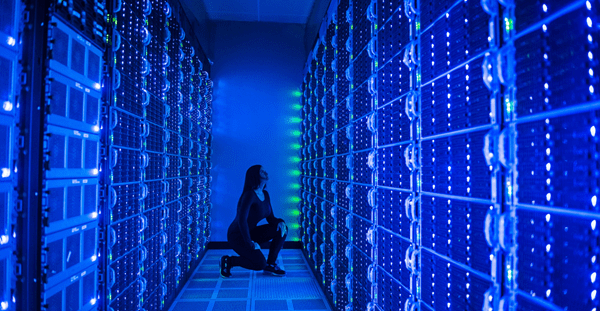Harnessing heat and humidity for sustainability
Data center owners are turning to innovative methods like liquid immersion cooling to enhance sustainability. But what about expanding environmental operating parameters? Can this strategy effectively reduce energy consumption?
The short answer is YES. By increasing temperature and relaxing humidity ranges, data centers can significantly cut mechanical cooling energy use, emerging as an industry-accepted solution for energy efficiency.
Efficient cooling starts with higher heat
Maintaining the correct temperature and humidity levels in a data center requires proper airflow and ventilation. To achieve this, a standard mechanical cooling system — which includes Computer Room Air Conditioning (CRAC), Computer Room Air Handler (CRAH) and airflow management units — diffuses heat energy from indoor spaces to the external environment. This regulates heat to optimize performance and protect equipment from wear and tear.
However, the traditional data center cooling method involves exercising strict controls over operating temperature and humidity, typically within a temperature range of 68oF to 72oF (20oC to 22oC) in combination with a humidity range of 40% to 55% Relative Humidity (RH). This has resulted in needlessly wasted energy due to the increased cooling requirements. The goal now is to meet the cooling requirements in the most energy-efficient manner.
Higher temperatures can shorten the useful life of servers and other equipment. Additionally, high humidity may cause equipment corrosion and electrical shorts, while low humidity increases the risk of Electrostatic Discharge (ESD) in the facility. As part of the recommended best practices, temperature changes, especially those that lead to excessive humidity levels, should be closely monitored to prevent any issues.
In the past, the impacts of extending the environmental operation parameters on IT equipment had not yet been fully studied or understood. Thanks to research by companies like META (formerly Facebook), Intel and The Green Grid, coupled with newly published ASHRAE data, the effects of higher operating parameters on IT equipment reliability and service availability have been determined to not be as detrimental as previously thought. The new ASHRAE data suggests that vendors of class A3 devices can support operational temperatures up to 104oF (40oC). Even with the improvements in IT equipment efficiency, allowing them to operate at higher temperatures does increase their failure rate, but as it turns out, not significantly. This assumes that the increases are within ASHRAE-recommended and allowable guidelines.
Smart sensing for better cooling
One of the best supportive practices in expanding operational parameters is to use environmental monitors, which involves using temperature and humidity sensors in the data center racks.
By ASHRAE standards, there should be a sensor at the top, middle and bottom of each rack to ensure full and accurate monitoring. From here, analytics can be derived for optimizing the heating, cooling and humidity range systems. These sensors are also used to monitor the performance of the assets. This helps with early detection of system issues such as overheating as part of the data center administration’s overall preventive measures.
How does this factor in making data center cooling more energy efficient? Using smart environmental monitors helps provide insights into potential problems with overheating and humidity imbalances, so preemptive action can be applied in advance. In turn, this cuts down on energy usage as opposed to reactive measures taken after issues have occurred, ultimately reducing the center’s carbon footprint. This is especially critical when operating a facility at higher temperatures.
Other advantages to using these monitors include the fact that they can allow for remote operation. Critical data collected from the sensors is much timelier and more accurate. It also saves money and resources because all processes from scheduling to updating can be conducted off site. Finally, staying one step ahead of cooling-related hazards, such as power usage effectiveness irregularities linked to server fan power and airflow optimization, helps ensure better health and safety for operations personnel. Assuming an average server replacement cycle of three to five years, the increased failure rate resulting from higher temperature and humidity may not be significant. This is because the equipment will typically be replaced with newer technology before it can fail.
Given the rapid advancements in data center development, there is also no shortage of innovative cooling systems in reaching sustainability goals. In this case, a simple tweak to operational parameters could help companies reap dividends in saving both money and energy consumption.
Stay tuned for our third data center solution in our upcoming blog next month. You can also read our latest construction costs report to gain insights into trends impacting data centers and the technology sector. To learn how we can help develop solutions for your project, get in touch with our experts.






